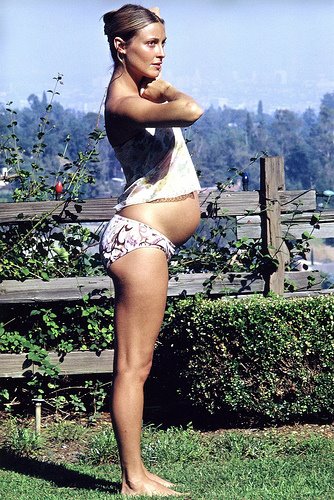When traffic on older posts starts shooting through the roof, it’s usually a sign that something new is happening with the people and events I’ve written about. The latest example: Charles Manson.
Mood music:
It appears that Charlie has obtained a marriage license and plans to wed 26-year-old Afton Elaine Burton, who goes by the name Star. The young lady says she loves Manson because of his environmental activism. She’s apparently willing to look beyond the fact that he masterminded the brutal slaughter of at least seven people.
The Associated Press quoted her as saying, “Y’all can know that it’s true. It’s going to happen. I love him. I’m with him. There’s all kinds of things.”
The AP says Manson won’t be allowed conjugal visits, but Star doesn’t seem bothered by that. She wants to fight for his freedom and says marrying him would allow her to get information not available to non-relatives. “There’s certain things next of kin can do,” she told the AP.
My Facebook feed is full of all kinds of colorful reaction. Some note the insanity of Manson being allowed to marry while same-sex couples can’t tie the knot in some states. One friend jokes that it’s good to see Manson at least respects the sanctity of marriage.
Others express shock that anyone with half a brain would marry the monster.
I’m not shocked. During the bloody summer of 1969, Manson got young adults to murder for him. He brainwashed and twisted them. Star is just the latest Manson girl. The summer of ’69 may be 45 years in the rearview mirror, but kids are just as susceptible to brainwashing now as they were then. There will always be kids like that.
The big news here is that Manson still has the power to manipulate. He’s 80 and in prison, but he’s still got it.
I’ve written a ridiculous number of posts about Charles Manson. What can I say? I’m a guy given to obsessions, and the Manson case is a big one. If you’ve missed any, here they are again.
The Beatles’ White Album and Charles Manson: A post about the album Charlie made such a big deal about.
Dennis Wilson and the Manson Family: The sad tale of Dennis Wilson, drummer of The Beach Boys and one-time friend of Charles Manson.
I Regret Wearing That Charles Manson T-Shirt: In the early 1990s, Patti Tate, sister of Sharon Tate, was on a public tirade against Guns ‘N’ Roses frontman Axl Rose for going on stage every night wearing a Charles Manson T-shirt. Around the same time, I had my own Manson shirt, worn regularly to freak people out.
Slaying Old Fears in the Hollywood Hills: On a business trip to Los Angeles, I killed some old demons.
Telling the Tate-LaBianca Story: Truth and Embellishment: How accurate is Restless Souls: The Sharon Tate Family’s Account of Stardom, the Manson Murders, and a Crusade for Justice?
Tate-LaBianca, 43 Years Later: A Strange Society of Manson Watchers: I’ve met some interesting people as a result of this Manson obsession.
The Most Important Book Ever Written About Sharon Tate and the Manson Murders: Restless Souls: The Sharon Tate Family’s Account of Stardom, the Manson Murders, and a Crusade for Justice may well be the most important book written on the Manson case.
Helter Skelter: Wherein the author first admits his OCD behavior includes an obsession with the Manson Case.


